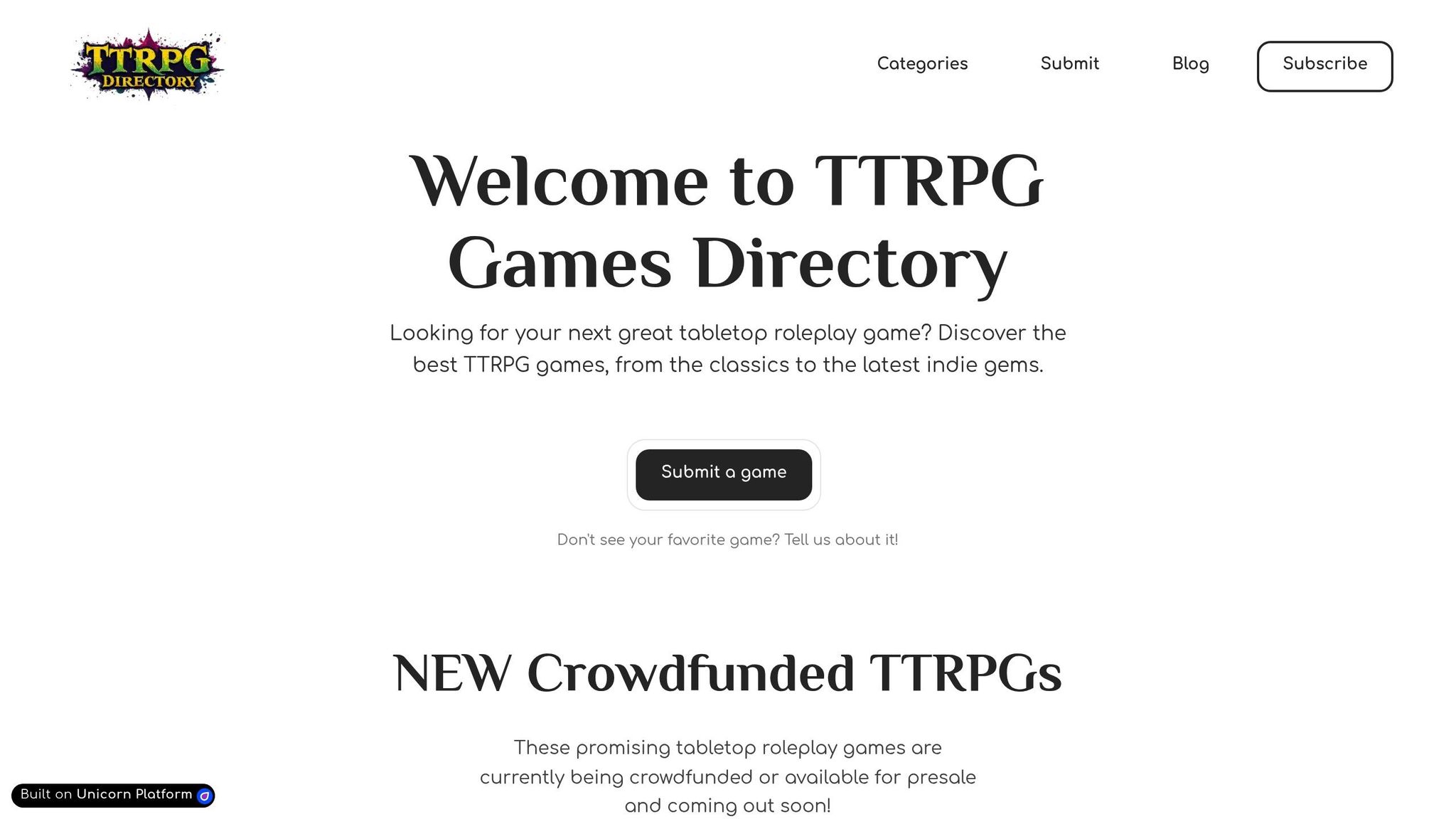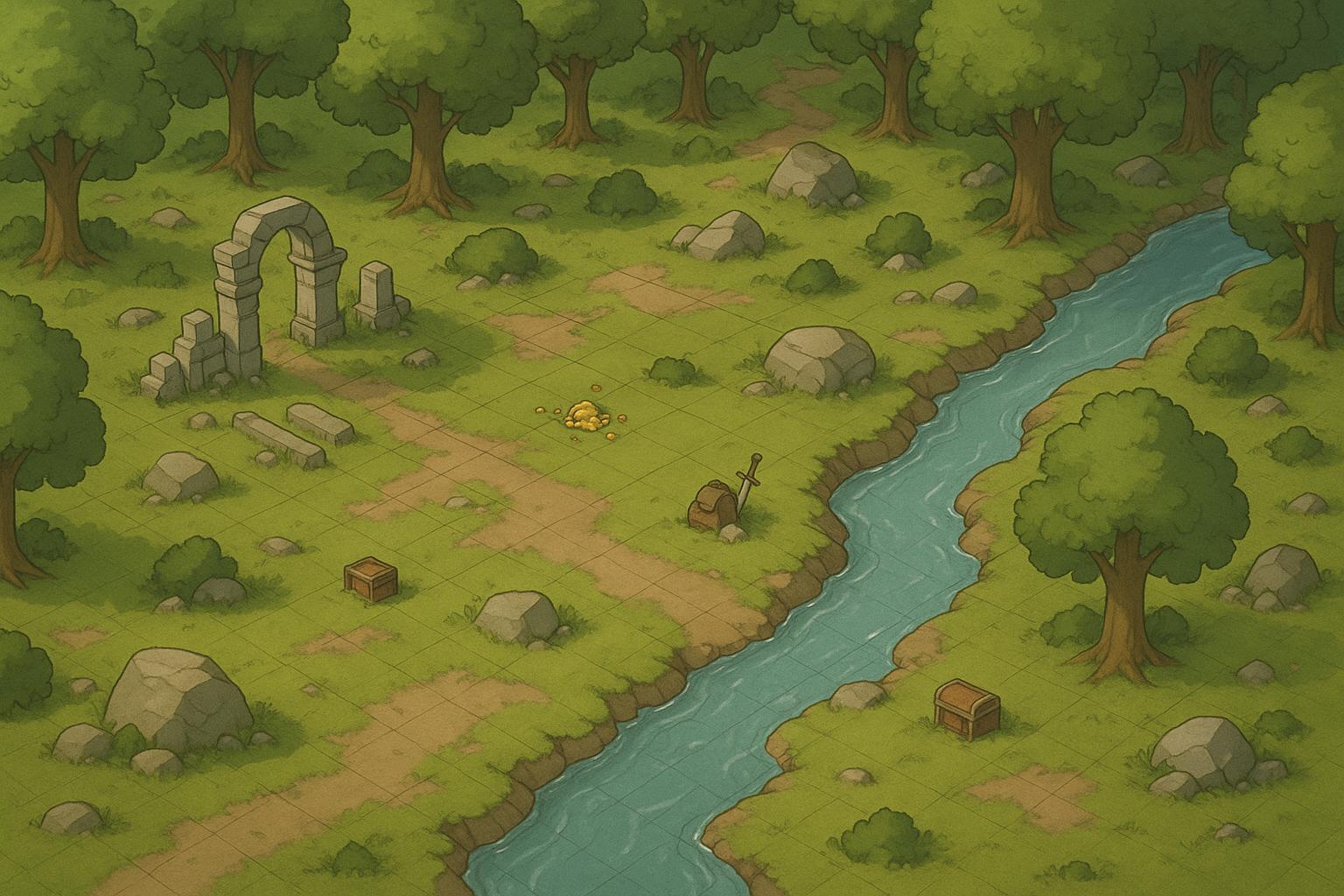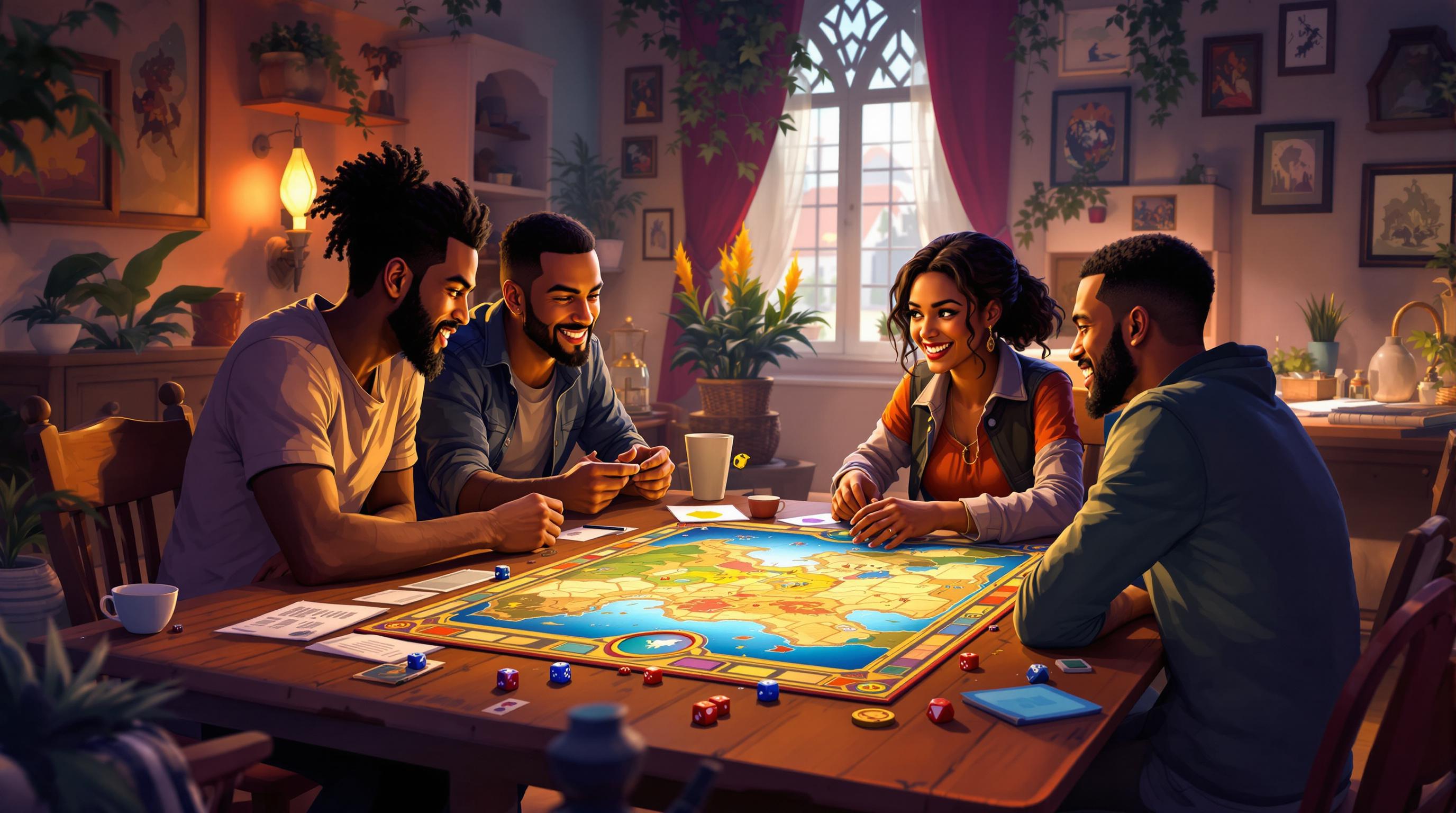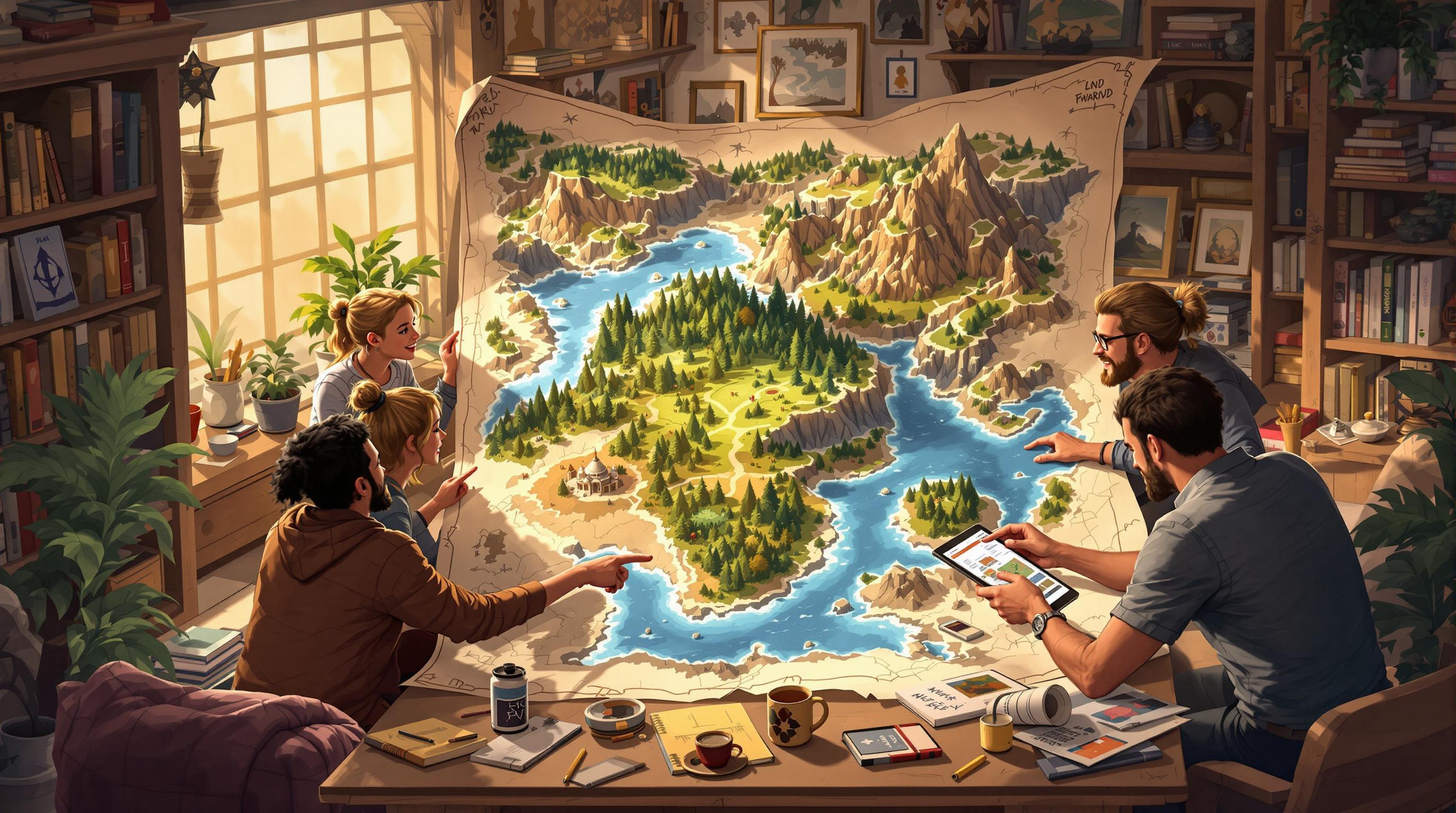Player decisions are the core of RPG storytelling, creating twists that feel natural and impactful. Unlike pre-written plots, these stories evolve based on choices like sparing an enemy, revealing a secret, or interacting with an NPC. Even small actions can lead to major surprises later.
Key takeaways:
- Player-driven twists come from in-game decisions, not pre-planned scripts.
- Examples: Sparing a foe who later returns as a villain or ally, or uncovering secrets tied to a character's backstory.
- GMs: Use flexible plans, foreshadowing, and player theories to build twists.
- Players: Bold choices and detailed backstories create richer narratives.
The result? Stories that feel personal and keep everyone engaged.
Balancing Storytelling in Games With Player Choice
How Player Choices Create Plot Twists
Player choices have the power to reshape a story, turning even the smallest decisions into major turning points. This dynamic offers a fascinating look at how plot twists naturally evolve during gameplay.
What Are Player-Driven Plot Twists
Player-driven plot twists emerge directly from the choices players make, rather than being pre-planned surprises from the GM. These twists feel natural because they grow out of the players' own actions. They carry emotional weight since they stem from decisions players can trace back to their own characters. For example, imagine a villain who rises to power because a player character chose to spare a defeated enemy. That twist feels earned because it connects to a specific choice, rather than being a random event dropped into the story.
In these cases, player actions act as the foundation for future plot developments. Even seemingly minor decisions can ripple through the narrative in unexpected ways. The GM keeps track of these choices and builds on them, crafting surprises that feel both logical and surprising. A key element here is delayed consequence. When the results of a choice aren’t immediately clear, the eventual twist is more likely to catch players off guard.
Player Actions That Generate Twists
Certain player actions are particularly good at creating unexpected shifts in the narrative. Here are a few examples:
- Interactions with NPCs: Decisions about how to handle NPCs - whether to capture, befriend, abandon, or recruit them - can lead to surprising consequences. For instance, a paladin might capture a goblin only to abandon it later. That goblin could return, transformed and armed with newfound power, becoming a key figure in the story. This type of cause-and-effect highlights how even small decisions can spark major plot shifts.
- Character Backstories: Hidden agendas or dark secrets in a player character’s backstory are fertile ground for twists. A trusted ally might turn out to have been working against the group all along, creating a betrayal that hits hard because of the trust and time invested by the players. These revelations are especially impactful when they come from within the party.
- Item Transactions: Selling, trading, or discarding items might seem mundane at first, but these actions can lead to major twists when the true importance of an item comes to light. The party might suddenly find themselves scrambling to recover a discarded artifact, creating new urgency and plot threads.
- Use of Abilities: The way players use their abilities or spells can also set the stage for twists. For example, a wizard’s fireball might destroy a building, inadvertently drawing the attention of the building’s owner - a criminal organization seeking revenge or compensation. Such actions can create personal antagonists or even entire new factions.
Great GMs observe these choices and weave them into the story, crafting twists that feel meaningful. These consequences can be a mix of positive and negative, ensuring that players feel their actions matter while keeping the narrative engaging and unpredictable.
Player Tips: How to Create Plot Twists
Plot twists can breathe life into any RPG campaign, and as a player, you have the power to shape them through thoughtful choices and collaboration. Here’s how you can craft twists that keep everyone on the edge of their seats.
Using Your Character's Backstory
Your character’s past isn’t just a static list of details - it’s a treasure trove of potential twists. Think beyond the basics and weave in unresolved conflicts, shadowy connections, or long-buried secrets that could resurface when the timing is right. For example, maybe your character has a mysterious benefactor whose motives are unclear, or an estranged family member with a grudge.
Work closely with your GM to ensure these elements fit naturally into the campaign. While you retain full control over your character’s backstory, collaboration ensures those threads are seamlessly integrated into the larger narrative. Subtle hints - like a letter from an old rival or a cryptic prophecy - can set the stage for jaw-dropping moments later on.
Making Bold Character Decisions
Safe choices rarely lead to memorable stories. Instead, lean into decisions that challenge your character’s morals, motivations, or flaws. Maybe your character takes a reckless gamble, betrays an ally, or makes a personal sacrifice that no one saw coming. These bold moves not only deepen your character’s arc but also create ripple effects that can lead to unexpected developments.
Don’t shy away from failure - it’s often the spark for the most compelling twists. A botched plan or a moment of vulnerability can open up storytelling opportunities that a flawless victory never could.
Working with Your GM
The best twists often come from a mix of player creativity and GM collaboration. Regularly touch base with your GM to share your character’s goals, fears, and long-term ambitions. This insight helps your GM craft twists that feel personal and impactful.
Be open about your comfort level with surprises and offer ideas or theories during gameplay. Flexibility is key - sometimes the most exciting twists come from directions you didn’t anticipate. By working together, you can create a story that’s not just engaging for you but also for everyone else at the table.
With these strategies, you can turn your character into a driving force for dynamic and unpredictable storytelling.
GM Guide: Supporting Player-Created Twists
Encouraging player-driven plot twists can elevate your game sessions into unforgettable storytelling experiences. Your role as a GM isn’t to micromanage every detail but to create a space where player choices and ideas shape the adventure.
Using Player Theories and Ideas
Players love to speculate about your world, and their theories are a treasure trove of inspiration. These discussions often reveal what surprises or excites them most. Pay close attention to their conversations, whether it’s a whispered theory about a mysterious NPC or a wild guess about the villain’s motives.
When a player suggests something intriguing, consider weaving it into the story. For instance, if someone suspects the friendly innkeeper is secretly working for the antagonist, you could subtly steer the narrative in that direction. This doesn’t mean you have to adopt every idea, but staying open to their input makes the game feel collaborative.
The trick is to listen without dismissing their ideas outright. Take note of the most compelling theories and find ways to integrate them naturally. By doing so, you create a shared storytelling experience where everyone feels invested in the narrative.
To make these twists feel seamless, subtle foreshadowing is your best friend.
Adding Hints and Clues
Foreshadowing is the glue that holds player-driven twists together. Instead of making twists feel abrupt or forced, scatter small, ambiguous details that can later take on new meaning. A nervous glance from an NPC, a cryptic note, or an odd object in a room can all become pivotal when the story unfolds.
Craft clues that can evolve with the narrative. For example, a strange letter could hint at a secret alliance, a family betrayal, or even a hidden agenda - depending on where the players take the story. This flexibility allows you to adapt to their choices while maintaining a coherent plot.
When players pursue unexpected ideas or actions, use the "Yes, and..." or "Yes, but..." approach. For instance, if a player investigates an unplanned detail, respond with "Yes, and you also notice…" to add depth, or "Yes, but as you search, you discover…" to introduce a new challenge. This keeps the story dynamic and ensures their actions have meaningful consequences.
To support this improvisational style, it’s essential to plan with flexibility in mind.
Building Flexible Story Plans
Rigid scripts can stifle creativity, so instead, focus on creating scenarios with multiple possibilities. Prepare the core elements - NPCs, conflicts, and challenges - but leave the specifics open to player decisions.
Equip yourself with adaptable tools like detailed maps, versatile NPCs with clear motivations, and random encounter tables. These resources make it easier to pivot when players take the story in unexpected directions. For example, a rival adventuring party could swoop in to claim a treasure if the players hesitate, or a political conspiracy might unfold if certain clues are ignored.
Design encounters that can lead to different outcomes and allow threats to progress independently of the players’ actions. This creates a living, breathing world where their decisions - and indecisions - carry weight.
Above all, ensure that player choices have logical and impactful consequences. When players take bold risks or make critical decisions, let the world react in ways that feel authentic. This reinforces their sense of agency and makes every choice meaningful, driving home the idea that their actions truly shape the story.
sbb-itb-b8b00a5
Common Plot Twist Types and Player Influence
When it comes to shaping narratives in tabletop RPGs, player decisions are the heartbeat of the story. By understanding different types of plot twists, both players and GMs can collaborate to craft engaging and unpredictable adventures. The best twists aren’t forced - they grow naturally from the choices players make.
Popular RPG Plot Twist Patterns
One of the most iconic twists is The Betrayal Twist. This happens when a trusted ally turns out to have a hidden agenda. What makes this twist so impactful is how it often ties directly to player actions. For instance, if players ignore subtle hints about a companion’s suspicious behavior or blindly trust someone without digging deeper, they set the stage for a betrayal. On the flip side, if players remain cautious and investigate thoroughly, the GM can flip the script - maybe the suspected traitor is actually loyal, and their secretive actions are part of a plan to protect the group from unseen dangers.
Another classic is The Hidden Identity Twist, where someone isn’t who they seemed to be. This twist thrives on player-created backstories. A character with a mysterious or incomplete past - like an orphan with no memory of their origins - opens the door for surprises like royal lineage, divine ancestry, or even a connection to the campaign’s villain. These revelations hit harder when players actively explore their character’s history, choosing to investigate clues and build relationships that lead to these discoveries.
Then there’s The Consequence Cascade, a twist where past decisions come back to haunt - or help - the party. Sparing a villain, cutting a shady deal, or leaving loose ends can create ripple effects later in the story. Imagine a merchant the players cheated now controlling a crucial trade route, or a monster they spared returning as either a powerful ally or an even greater threat. The beauty of this twist lies in showing how player choices shape the world over time.
Finally, The False Assumption Twist flips the players’ understanding of the story. This happens when players realize their conclusions about a situation were wrong. These twists rely heavily on how players interpret evidence and investigate. If they jump to conclusions or overlook key details, they set themselves up for a shocking revelation. The most satisfying versions of this twist occur when the truth was always within reach, but the players chose not to dig deep enough - making the twist feel earned rather than unfair.
Twist Types: Benefits and Challenges
Each twist type brings its own rewards and hurdles, both for players and GMs. The table below breaks down the strengths and challenges of these twists:
| Twist Type | Player Benefits | Player Challenges | GM Benefits | GM Challenges |
|---|---|---|---|---|
| Betrayal | Creates emotional highs; rewards suspicion | Can feel unfair if poorly foreshadowed | Easy to implement with established NPCs | Risk of players feeling manipulated |
| Hidden Identity | Deepens character development; ties to story | May overshadow others; can feel predetermined | Connects backstory to main plot | Balancing multiple reveals; needs coordination |
| Consequence Cascade | Adds weight to past choices; feels immersive | Can feel punishing; may stifle bold actions | Rewards detailed record-keeping; builds continuity | Timing twists can be tricky |
| False Assumption | Encourages critical thinking; adds complexity | Can frustrate players if clues feel hidden | Uses player theories to enhance storytelling | Requires careful management of information |
The most memorable twists often combine these patterns. A betrayal could also involve a hidden identity, or a consequence cascade might shatter the party’s assumptions about their past actions. What matters most is keeping player decisions at the heart of the story.
Tools and Resources for Collaborative Storytelling
Crafting unforgettable plot twists driven by player choices starts with having the right tools and games. The systems and resources you choose play a huge role in shaping how player-driven narratives unfold. Some games naturally lean into collaborative storytelling, while others stick closer to pre-planned storylines.
Using the TTRPG Games Directory

The TTRPG Games Directory is a fantastic place to begin if you're searching for games that emphasize player agency and dynamic storytelling. This resource catalogs a wide variety of tabletop RPGs, from timeless classics to indie gems, detailing each game's mechanics, themes, and unique features. It’s an invaluable guide for finding systems that encourage players to shape the story.
When exploring the directory, pay close attention to the mechanics descriptions. Games that excel at player-driven storytelling often feature flexible rules, narrative tools that adapt to player input, and character creation systems designed to inspire rich backstories. These details help you pinpoint which games align with your group’s storytelling needs before diving into new rules or buying game materials.
With such a broad selection of genres, you’re bound to find something that suits your group’s style. Whether you love unraveling mysteries or diving into action-packed adventures where every decision has consequences, the directory helps you zero in on the right fit. Knowing what features to prioritize ensures the game you choose empowers players to shape the story at every turn.
Finding Games That Support Player Agency
Not all RPG systems are created equal when it comes to collaborative storytelling. To find one that truly supports player-driven narratives, focus on a few key traits.
Narrative-driven mechanics are a great starting point. Look for games that go beyond combat and skill checks, offering explicit tools for players to influence the story. These systems turn players into co-creators, giving them the power to steer the narrative in unexpected directions.
Flexible character creation is another must-have. Games that encourage players to craft detailed backstories, leave room for mysterious pasts, or create ties to other characters lay the groundwork for surprising twists. Systems that allow players to leave parts of their character’s history open-ended or connected to others make it easier to weave collaborative storylines later on.
GM improvisation support is what sets exceptional games apart. The best systems provide guidance for Game Masters to adapt to player ideas, build on their unexpected decisions, and keep the story evolving. Look for games that encourage GMs to embrace player creativity with a "yes, and..." mindset rather than shutting ideas down.
Session zero tools and collaborative worldbuilding mechanics are essential for setting up a strong foundation. These features help players and GMs work together to create shared campaign elements, define character relationships, and establish story expectations. Starting with a collaborative approach makes it easier to weave player-driven twists into the narrative.
When choosing a game, think about your group’s experience level and preferences. Some systems require a lot of improvisation from the GM, while others offer more structure for groups who are newer to collaborative storytelling. The goal is to strike the right balance between creative freedom and narrative support that fits your table’s comfort zone.
Conclusion: Making Player-Driven Plot Twists Work
Player-driven plot twists bring an exciting unpredictability to RPG sessions. Their success hinges on collaboration between players and GMs, where both contribute to crafting moments that surprise and resonate with everyone at the table. This teamwork lays the groundwork for creating twists that feel both surprising and meaningful.
Players contribute by weaving rich backstories and making bold, character-driven choices. When you dive into your character's history, make decisions that align with their personality, and embrace the narrative as it unfolds, you open the door to twists that feel natural rather than forced. On the other hand, GMs play their part by designing flexible story structures that incorporate player input. This doesn’t mean abandoning preparation but rather planning in a way that encourages player-driven surprises instead of constraining them.
Choosing the right game system is critical to making this work. For systems that truly prioritize player agency, resources like the TTRPG Games Directory can be incredibly helpful. With its extensive catalog of both classic and indie games, complete with detailed breakdowns of mechanics and themes, you can find the perfect system for collaborative storytelling - one that makes player-driven plot twists not just possible but seamless.
The most effective plot twists grow organically from the story being told at the table. They feel inevitable in hindsight but catch everyone off guard in the moment. These twists stem from character decisions, build on the established narrative, and enhance the story rather than disrupt it.
To put this into practice, start small in your next campaign. Encourage players to create mysterious backstories, adopt a "yes, and..." mindset, and choose a game system that empowers player agency. With the right approach, you’ll find that the most unforgettable twists are the ones no one planned but everyone helped bring to life.
FAQs
How can players use their character's backstory to create meaningful plot twists in RPGs?
To create plot twists that truly resonate, start with a detailed and adaptable backstory that ties seamlessly into the game's world and overarching themes. Share essential elements with your GM - things like unresolved conflicts, hidden secrets, or enigmatic relationships. These details give the GM the tools to thread your story into the broader narrative.
Work closely with your GM but leave room for surprises. This collaboration allows your backstory to spark twists that feel both unexpected and natural. Focus on elements that can be subtly foreshadowed, ensuring the eventual reveal feels rewarding and draws everyone deeper into the story.
How can Game Masters balance player-driven plot twists with the main story?
Game Masters can keep the main story on track while embracing player-driven plot twists by staying adaptable and fostering a sense of shared storytelling. By actively listening to players' choices and incorporating their ideas into the narrative, you can create surprising and engaging moments without losing sight of the overarching plot.
The key is to guide the story subtly, ensuring players feel their decisions matter while still maintaining narrative cohesion. Striking this balance often requires a mix of careful planning and on-the-spot improvisation. This way, unexpected twists can enrich the story, keeping the game exciting and immersive for everyone involved.
How do RPG systems influence player-driven plot twists, and what should you consider when picking one?
RPG systems play a key role in how players can weave unexpected twists into the storyline. Narrative-focused systems like Fate or Powered by the Apocalypse are specifically designed to hand players more control, making it easier to steer the plot in surprising directions. Similarly, systems that prioritize character backstories and impactful decisions - such as The Burning Wheel - naturally inspire player-driven surprises.
When selecting a system, consider those with storytelling mechanics that adapt easily, rules that encourage improvisation, and incentives for imaginative choices. These elements empower players to shape the story while keeping the game lively and engaging for everyone at the table.


